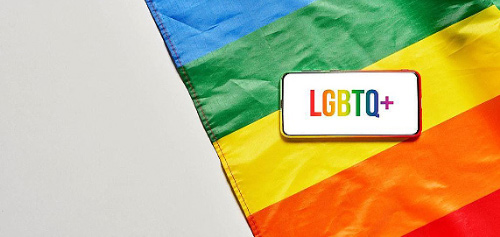Ethical, Legal, and Affirmative Practices for LGBTQ+ Youth
Being a youth in today’s world can be difficult enough, however when you are a youth that is perceived as “different” in some way, it only makes it that more difficult. With the rates of mental health concerns on the rise, when a child identifies within the LGBTQ community, this puts them at a greater risk for depression, anxiety, thoughts of self-harm and poor school performance (NASP, 2017). In 2018, the Human Rights Campaign reported their results of their survey of more than 12,000 LGTBQ+ youth ages 13-17, with the results showing that more than seventy-seven percent of LGBTQ teenagers reported feeling depressed or down over the past week as well as only 26 percent stating that they always feel safe in their school classrooms -- and just five percent feel all of their teachers and school staff are supportive of LGBTQ people. It is statistics like these that make it imperative for school psychologists to know their ethical and legal obligation to these high risk youth.
Ethical Practices When Working with LGBTQ+ Youth
School Psychologists are ethically obligated to ensure that all youth with diverse sexual orientations, gender identities or expressions are able to develop and express their identities in a school setting that is safe and free of discrimination, violence and abuse (NASP, 2017). However, within schools, LGBTQ+ youth are often the victims of bullying, discrimination and harassment that is associated with poor attendance, grades, lower self-esteem, higher rates of depression, greater substance abuse, and higher risk for suicide (Centers for Disease Control and Prevention, 2017). To truly be able to assist these high risk youth, school psychologists must:
• Be aware of their NASP ethical guidelines in that school psychologists must not reveal an information about sexual orientation, gender identity, or transgender status of a student with the individual’s permission.
• Recognize their own biases regarding the LGBTQ+ community and refer the student if they are not the “right fit” to help the student in need.
• Recognize positive student development that includes social, emotional, and behavioral health and the ability to cope with life’s challenges Adopt an affirmative approach
• Adopt an affirmative approach
Legal Practices When Working with LGBTQ+ Youth
In addition to the ethical standards a school psychologist must follow, it is just as important to be aware of the federal and state legislation and court decisions that impact the rights of LGBTQ+ youth. Important pieces of federal legislation include the 1st amendment to the U.S. Constitution, the Equal Protection Clause of the 14th Amendment to U.S. Constitution, Title IX of the Education Amendments and the Equal Access Act. Please visit Know Your Rights - Federal Laws Protecting GSAs and LGBTQ Students | GSAFE (gsafewi.org) for more details regarding these important laws. Unfortunately, at the state level, rules and policies are not uniform and it varies from state to state. For example, if you are a school psychologist practicing in Florida, it would be important for you to be aware of recent legislation such as Senate Bill 84, which protects LGBTQ youth from receiving conversion therapy. Just as important are the bills that continue to be passed that do not represent equality and fairness for the LGBTQ youth, such as the bill that was signed on June 1st by Florida Gov., Ron DeSantis that bars transgender female athletes from playing on girls and women’s sports teams at public schools at the secondary and college level. With so much progress within the LGBTQ community, there continues to be changes (for good and bad) everyday. It is imperative that school psychologists stay up to date with current legislation in order to best serve their student population.
Equality
Some students who identify as LGBTQ+ experience supportive, welcoming school environments. Whereas, others are experiencing unwelcoming, unsafe, and unsupportive condition in schools. Research has found that youth identifying as LGBTQ+ are more likely to experience bullying, stress, and fear in schools than non-LGBTQ+ youth and this is not EQUALITY.
Standing in Solidarity
Educators, parents, students, and stakeholders are standing in solidarity to demand safe and affirming schools where all students have access to safe free appropriate public education (FAPE), where all students can learn and thrive without feeling like an outcast. Students who identify as LGBTQ+ need us to stand up in unity and ensure all schools are places where all students are protected and empowered.
Educators in Action
Educators are leading the conversation and creating campaigns, initiatives and legislative efforts to create safe and affirming schools and support LGBTQ+ student rights. These are a few initiatives to ensure students feel supported and remain safe in our schools and communities (National Education Association, 2018).
1. Fostering Safe and Affirming Schools for All Students (starting school clubs)
2. Helping to Shape LGBTQ+-inclusive Curriculum and Textbooks (California FAIR Education Act, 2011, laid the ground work for an LGBTQ+-inclusive curriculum in the state.
3. Training Other Educators to Raise their Voices for LGBTQ+ Students
4.Backing Legislation That Supports LGBTQ Students’ Rights.
5.Supporting School Naming Initiatives That Honor Legacies of LGBTQ+ Activists & Leaders
According to the U.S. Department of Education’s (DOE) Office for Civil Rights (OCR), issued a notice of interpretation regarding enforcement of Title IX’s prohibition on discrimination on the basis of sex to include: (a) discrimination based on sexual orientation; and (b) discrimination based on gender identity (Morris, 2016).
According to a 2018 LGBTQ+ youth report published in the National Education Association (NEA) publication:
• 67% of youth hear families make negative comments about people who identify as LGBTQ+.
• While some students are open about their identities at school, only 21% are out at home.
• Privacy and confidentiality are critically vital for LGBTQ+ youth, specifically for those who not have supportive families. Extreme rejecting behaviors can have terrible consequences. Approximately 40 % of the homeless youth population in the United States identify as LGBTQ+.
Resources
U.S. Department of Education Confirms Title IX Protects Students from Discrimination Based on Sexual Orientation and Gender Identity - https://www.ed.gov/news/press-releases/us-department-education-confirms-title-ix-protects-students-discrimination-based-sexual-orientation-and-gender-identity
GSA Network - https://gsanetwork.org/
Student and GSA Resources - https://www.glsen.org/resources/student-and-gsa-resources
Its Gets Better Project - https://itgetsbetter.org/
Q Chat Space - https://www.qchatspace.org/
Q Card Project - http://www.qcardproject.com
Stomp Out Bullying - https://www.stompoutbullying.org/lgbtq-bullying
References
2018 LGBTQ Youth Report. HRC. (2018). https://www.hrc.org/resources/2018-lgbtq-youth-report
Centers for Disease Control and Prevention. (2017). LGBT Youth. Centers for Disease Control and Prevention. https://www.cdc.gov/lgbthealth/youth.htm
Editors, N.E. (n.d.). National education association handbook. National Education Association.
Morris, L. (2016). Discrimination based on sexual orientation covered by title ix, federal court rules. Title IX Today, 1(11). https://doi.org/10.17732/tixt0110/webexclusive
NASP Position Statement. (2017). Safe and Supportive Schools for LGBTQ+ Youth. National Association of School Psychologists. https://www.nasponline.org/


